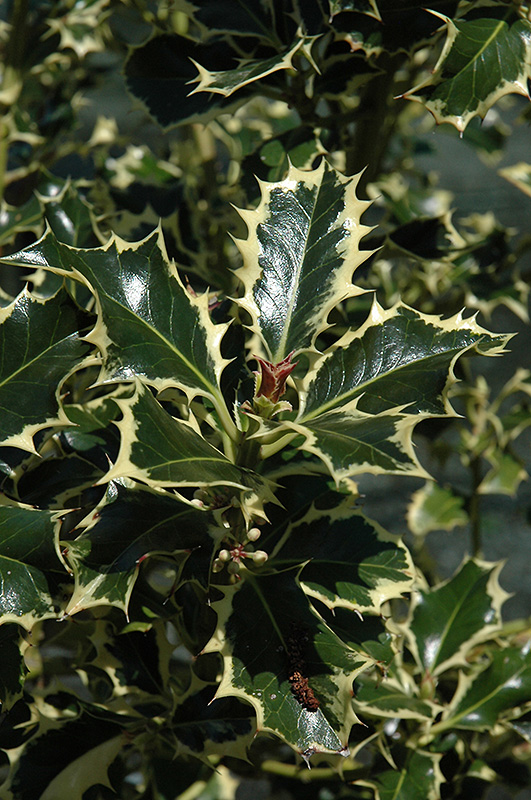Aureomarginata English Holly
Ilex aquifolium 'Aureomarginata'
Height: 40 feet
Spread: 20 feet
Sunlight:
![]()
![]()
Hardiness Zone: 5b
Description:
This stunning cultivar is valued for its beautiful red berries which last throughout winter; attractive, glossy green foliage with striking white edges make this shrub really stand out; it requires moist to wet highly acidic soil
Ornamental Features
Aureomarginata English Holly is primarily grown for its highly ornamental fruit. It features an abundance of magnificent red berries in mid fall. It has attractive forest green foliage edged in white. The spiny oval leaves are highly ornamental and remain forest green throughout the winter.
Landscape Attributes
Aureomarginata English Holly is a dense multi-stemmed evergreen tree with an upright spreading habit of growth. Its average texture blends into the landscape, but can be balanced by one or two finer or coarser trees or shrubs for an effective composition.
This is a relatively low maintenance tree, and is best pruned in late winter once the threat of extreme cold has passed. It is a good choice for attracting birds and bees to your yard, but is not particularly attractive to deer who tend to leave it alone in favor of tastier treats. It has no significant negative characteristics.
Aureomarginata English Holly is recommended for the following landscape applications;
- Mass Planting
- Hedges/Screening
- Naturalizing And Woodland Gardens
Planting & Growing
Aureomarginata English Holly will grow to be about 40 feet tall at maturity, with a spread of 20 feet. It has a low canopy with a typical clearance of 2 feet from the ground, and should not be planted underneath power lines. It grows at a medium rate, and under ideal conditions can be expected to live for 50 years or more.
This tree does best in full sun to partial shade. It prefers to grow in moist to wet soil, and will even tolerate some standing water. It is particular about its soil conditions, with a strong preference for rich, acidic soils. It is quite intolerant of urban pollution, therefore inner city or urban streetside plantings are best avoided, and will benefit from being planted in a relatively sheltered location. Consider applying a thick mulch around the root zone in winter to protect it in exposed locations or colder microclimates. This is a selected variety of a species not originally from North America, and parts of it are known to be toxic to humans and animals, so care should be exercised in planting it around children and pets.

